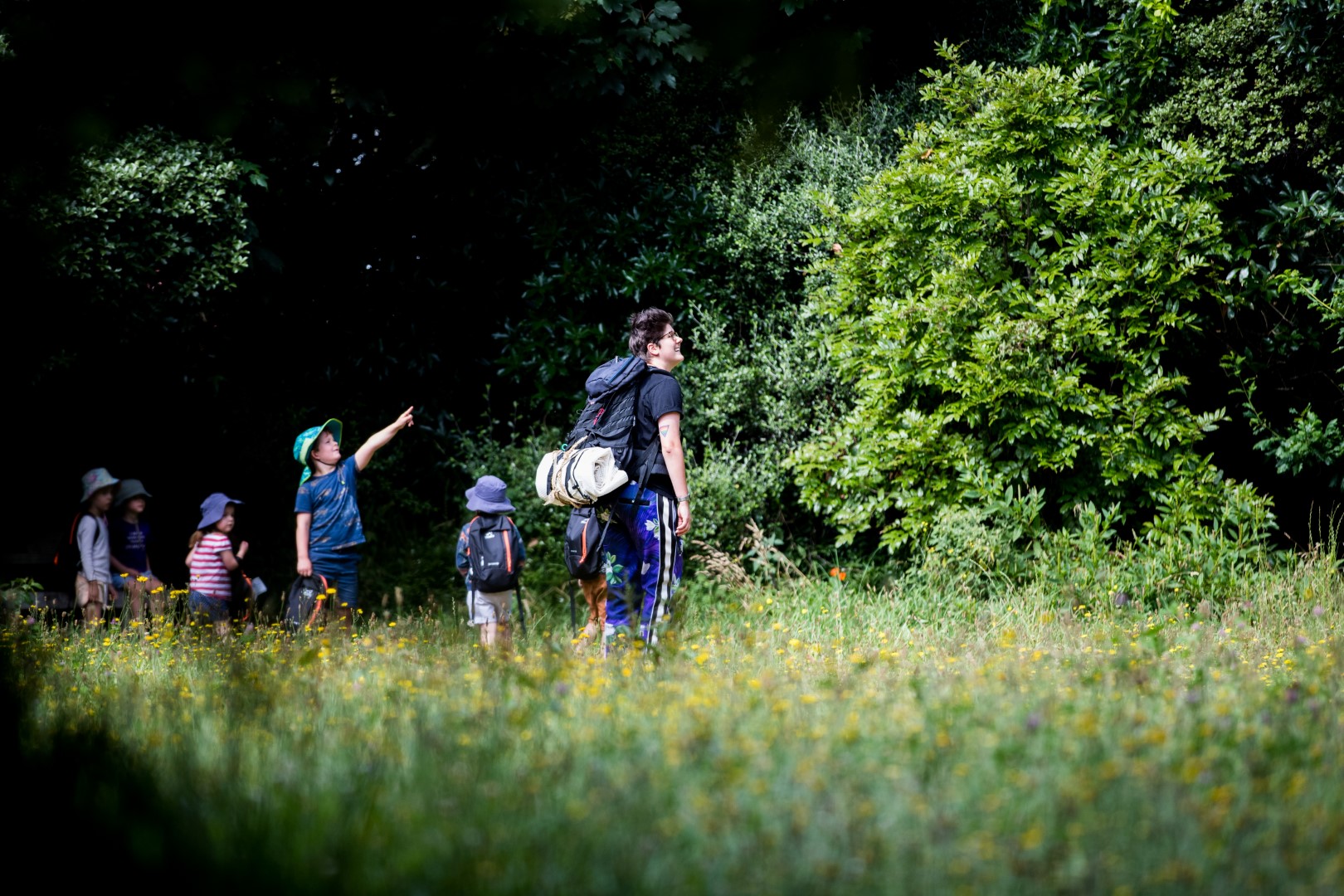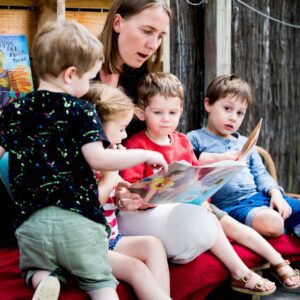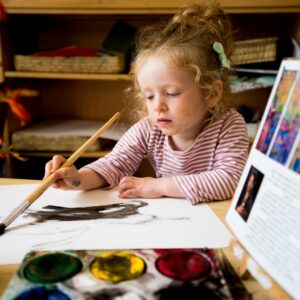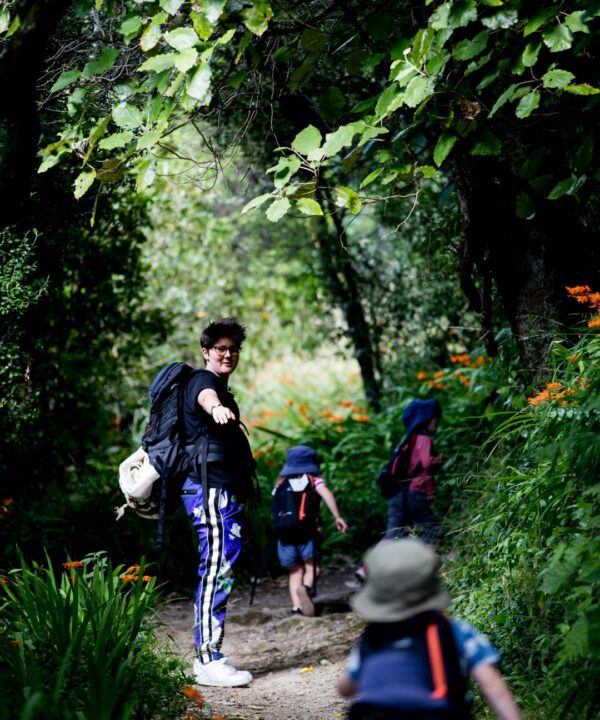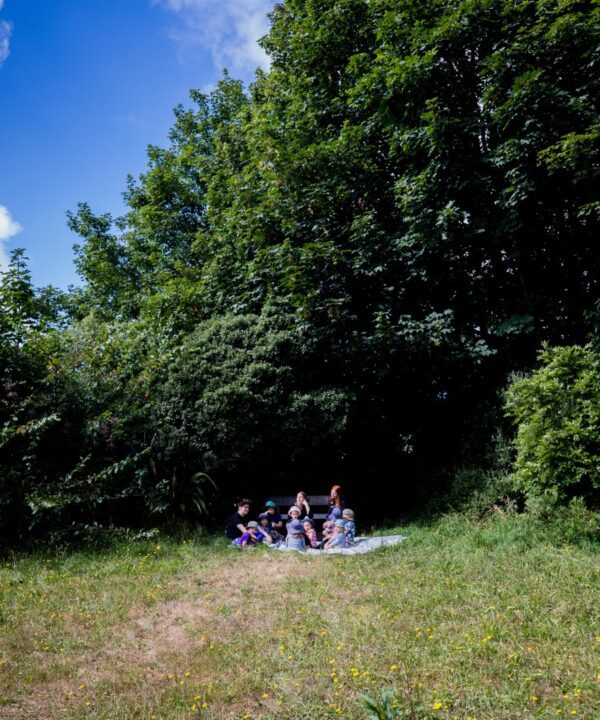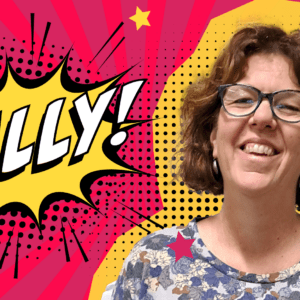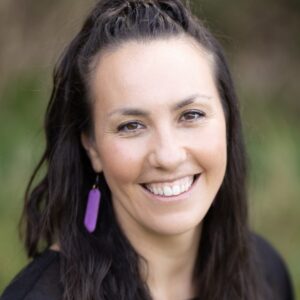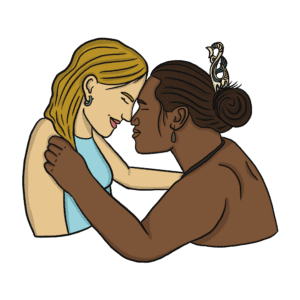Not I, some child, born in a marvellous year,
Will learn the trick of standing upright here1.
More than 70 years after poet Curnow expressed a colonist’s unease and dreamed of a time when children might grow up standing comfortably in Aotearoa New Zealand, eminent historian Vincent O’Malley has declared that the new histories curriculum could unlock the trick to belonging here. For our tamariki to find their tūrangawaewae, they need to know and respect the stories of our past.
O’Malley has carved out a reputation for retelling our stories through a bicultural lens, an approach that is at the heart of the Aotearoa New Zealand histories curriculum to be introduced in 2023. For teachers beginning implementation of the document, this reorientation is both exciting and daunting. There is nothing more satisfying than providing tamariki with fresh lenses to understand the world and their place in it. But at the same time, building a teaching and learning programme that is locally relevant and culturally inclusive is a challenge.
“There is nothing more satisfying than providing tamariki with fresh lenses to understand the world and their place in it.”
That said, the task is not without precedent in Aotearoa. For 25 years, kaiako in Early Childhood Education have been immersed in the bicultural curriculum Te Whāriki, which embraces many of the key concepts of the new histories document. Whakapapa, whanaungatanga, tūrangawaewae and kaitiakitanga are woven through the early childhood experience of our tamariki, as kaiako bring the past into the present.
For this article Ako spoke with kaiako from centres in different communities, to learn how they are growing tamariki confident in their identity and belonging.
Ko Te Ahumairangi te puke
Ko Kaiwharawhara te mātāpuna waiora
Ko Te Whanganui-a-Tara te moana
Ko Hill Street ECC te kura
Nō reira, tēnā koutou, tēnā koutou, tēnā tatou katoa
On a weekday morning in downtown Wellington, city workers drop off their children at Hill Street Early Childhood Centre, a double story villa perched above the busy motorway. Most of the tamariki have made the journey from the outer suburbs, but here, in the midst of the bustling city, they feel a strong sense of belonging, not only to a whānau made up of kaiako and friends, but also to place.
“We are very focused on whakawhanaungatanga,” says kaiako Chloe Lundie-Hodge. “We want our tamariki to feel strongly connected to their Hill Street whānau and at the same time find their place in the city. Kaiako work very hard to give children an understanding of the environment they are in and their role and responsibilities in society. Our tamariki learn what’s come before them, their connection to it and how they can influence the future.”
A sense of tūrangawaewae is built over time. Tamariki build strong attachments to the moana, maunga and awa, all of which feature in the Centre pepeha. Te Whanganui-a-Tara, the harbour, is visible from Hill Street and close enough for regular visits. Still nearer, on the other side of the motorway, is Te Ahumairangi maunga with its network of winding trails.
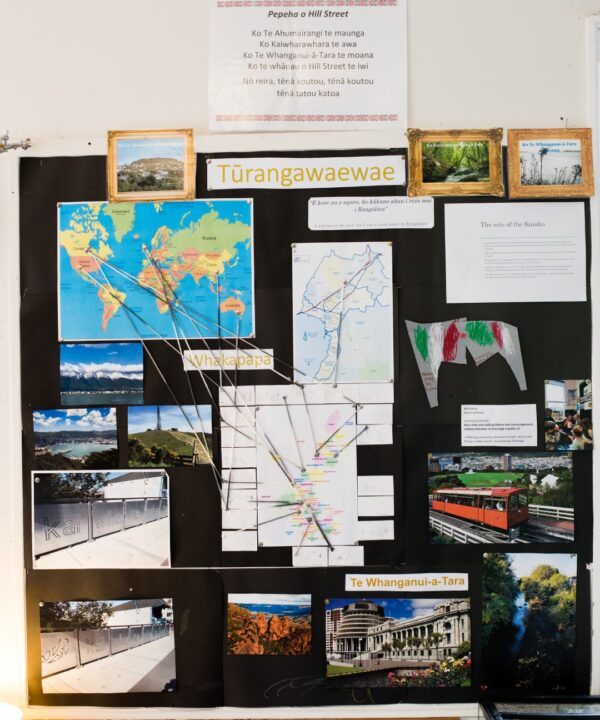
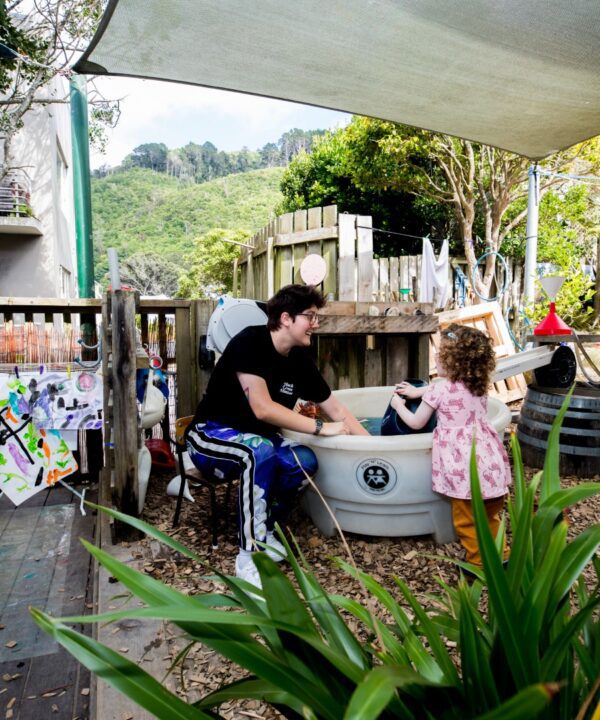
“Our tamariki connect strongly to the harbour and Te Ahumairangi,” says Lundie-Hodge. “The maunga is a home away from home for them and they sometimes call the long walk up it ‘the other Hill Street.’”
The maunga and bush have a spiritual significance for the tamariki and there is always discussion of Papatūānuku and Tāne Mahuta in their exploration. They notice changes over time and see themselves as kaitiaki.
“Our tamariki really develop understandings and respect of te ao Māori,” explains Lundie-Hodge. “As much as we Pākehā kaiako are able, we nurture a Māori world view. So when we arrive in the bush there’s a kind of centring, a moment of quiet and karakia.”
There’s also a lot of forest education which is fun. Earlier in the year the children spent three months building a tree hut in the bush and talked of how they might all move there should the Centre ever be destroyed by an earthquake.
The immersion of tamariki in biculturalism, spills over into their home lives. Lundie-Hodge describes how parents pick up on the snippets of te reo that their children bring home with them.
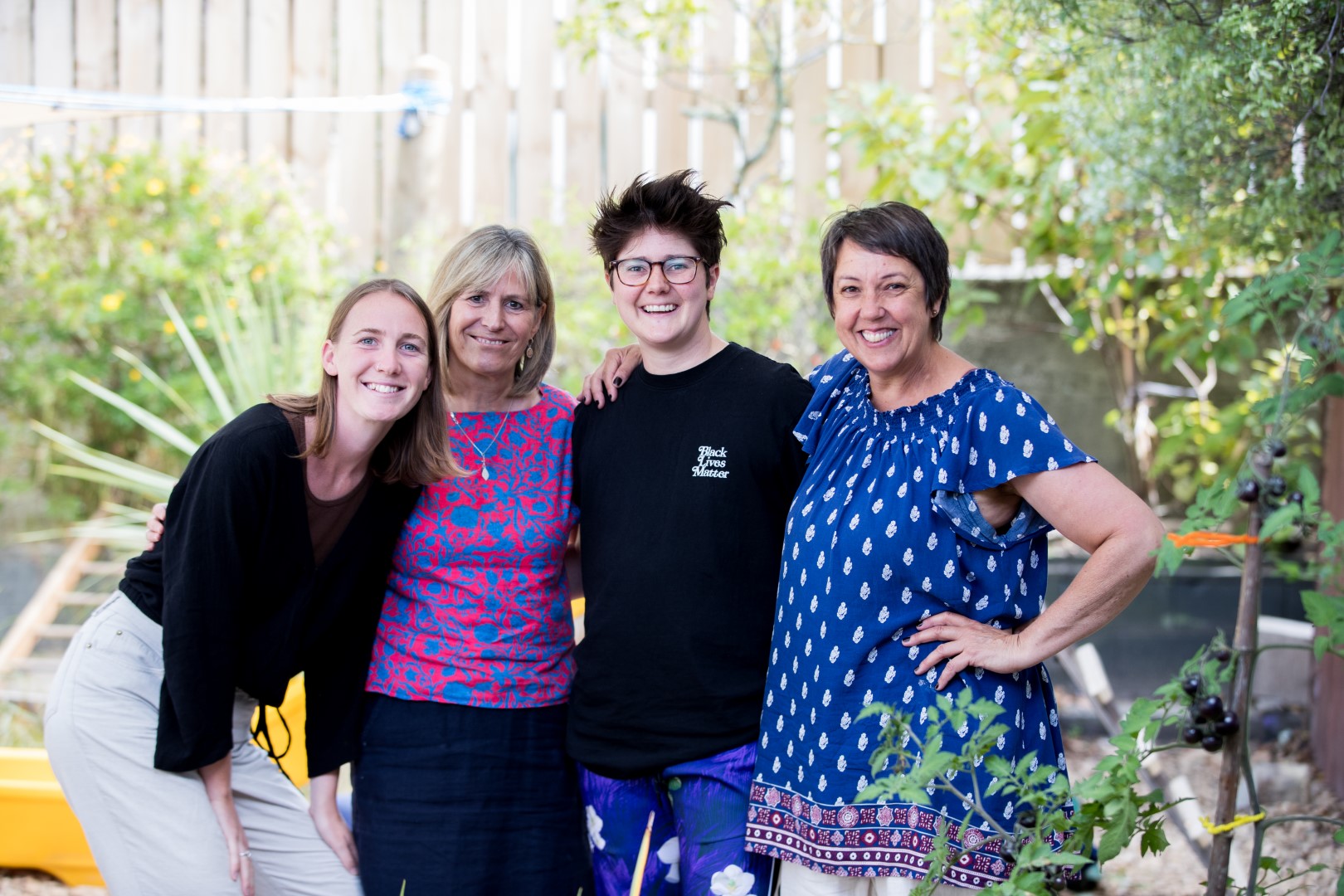
“The tamariki adopt te reo so quickly and use it at home, so parents respond. We’ve had parents who have started doing te reo courses themselves, so they can join their children’s journey. The waiata, concepts and attitudes in the Centre drip out into the community.”
Those attitudes grow out of the Centre philosophy which borrows heavily from te ao Māori. The core values of kaitiakitanga (guardianship), kotahitanga (unity), manaakitanga (caring) and tino rangatiratanga (self-determination), acknowledge everyone’s mana, as well as the responsibilities tamariki and kaiako have to each other and the environment. A fifth value, pārekareka, emphasises the importance of having fun.
“We really do live by those values,” says Lundie-Hodge. “They are embodied in our tiriti which the children have signed and recite regularly.”
It is natural that in strolls around Te Whanganui-a-Tara and on the trails of Te Ahumairangi discussion of the past arises. Tamariki learn about how the area has changed and about interactions between Māori and Pākehā. These discussions continue within the Centre, where there are many books dealing with Aotearoa New Zealand history. Those of Gavin Bishop are particular favourites.
“The maunga is a home away from home for our tamariki and they sometimes call the long walk up it ‘the other Hill Street.’”
“We don’t plan for it, but nor do we shy away from those conversations. Tamariki ask questions and in lay child’s terms we talk about colonisation and injustice, and how we can do better moving forward. As our tamariki grow up and move through the schooling system and their working lives, it’s important they have understandings and values that will help them stand up for indigenous rights.”
When the tamariki of Hill Street do move on, some attend Northland School which sits on the opposite side of Te Ahumairangi, up near the ridge line. During 2021 the junior school and the Centre worked closely on a histories inquiry.
“We had decided to focus on tūrangawaewae,” explains Associate Principal Judith Urry.
“We wanted the students to ask: Who and where are we, within the context of our school and the city? When we learned that Hill Street had a similar inquiry, we met and agreed to work in tandem with them.”
It seemed an obvious thing to do, since both groups of children had Te Ahumairangi as their maunga and living learning resource, but by working in parallel there was also an opportunity to explore differing perspectives, an important concept in the histories curriculum.
“Though we are close by each other, the children at Hill Street see a different Wellington from the one our tamariki see from up on the ridge line,” says Urry.
The Northland children began to build a cardboard city, replete with landmarks that were visible from the school. Meanwhile, older tamariki at Hill Street constructed their own models which they brought up to the school, positioning a Beehive, a Hill Street Early Childhood Centre and some small figures of themselves on the city.
“It was really special,” says Urry, describing the collaborative chatter. “So we decided to take the perspectives idea further and soon after we picked up the children and kaiako from Hill Street and spent the day looking at the city from different vantage points. First we looked down at the city from Matairangi (Mount Victoria). Then we went down to Lambton Quay to look from ground level, looked over town from James Cook Hotel, and then from a different part of the harbour.”
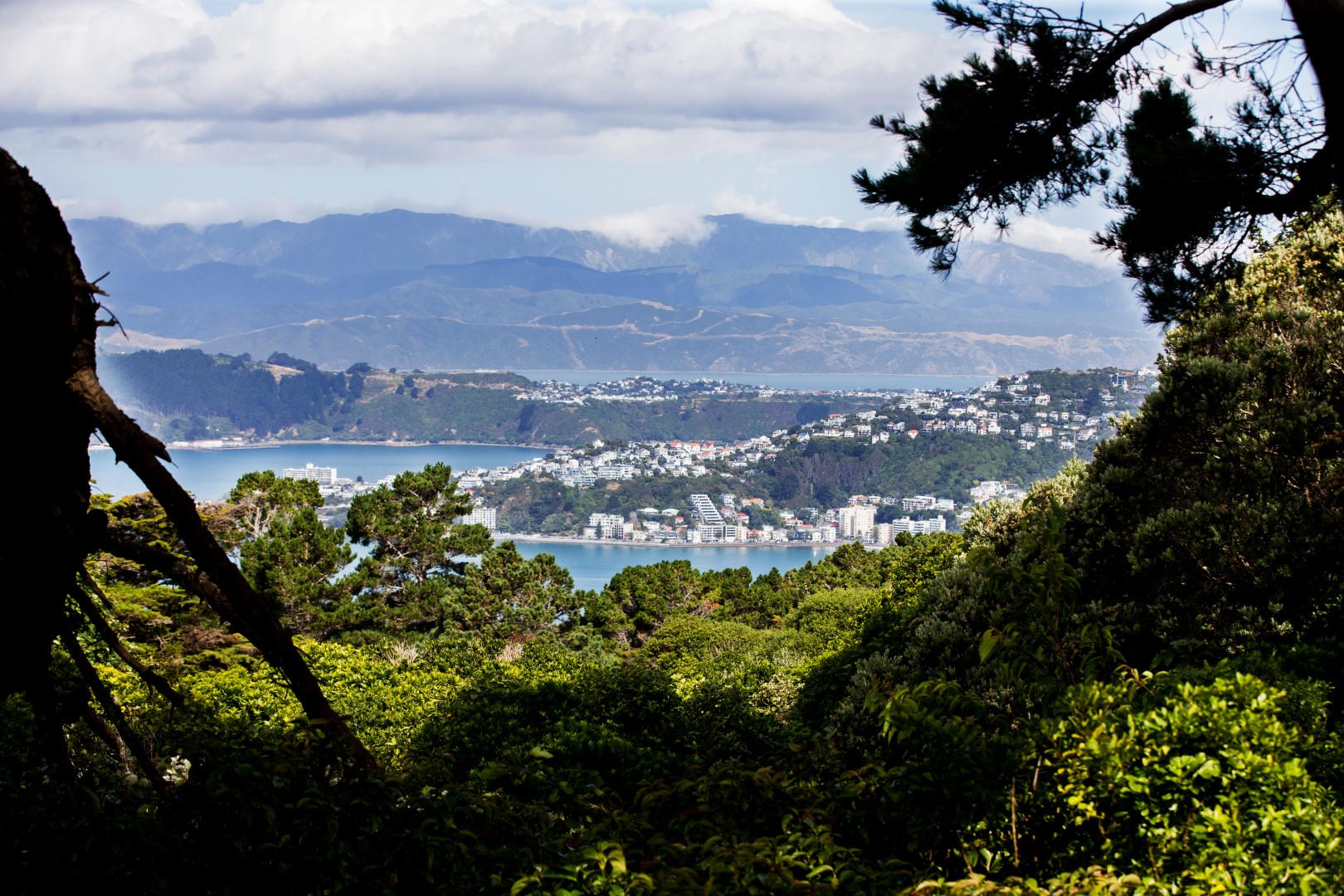
In the weeks that followed, a new perspective emerged for the Northland School tamariki. During a venture up Te Ahumairangi there was discussion of the fact that the maunga predated the city. A child commented: “Te Ahumairangi holds the stories of Maui in his heart.” This opened up a new pathway of inquiry, whereby tamariki shared their own stories of special places, through writing and art. Later, when another child explained that: “The maunga saw the boats of the first white people come,” kaiako planned to follow the thread, investigating changes the maunga had overseen. Sadly COVID interruptions meant there was not enough time.
Ko Pūtauaki te maunga
Ko Tarawera te awa
Ko Tūwharetoa te iwi
Ko Te Arawa me Mataatua nga waka
Five hundred kilometres north, another maunga is integral to another early childhood centre. Pūtauaki Kindergarten in Kawerau, takes its name from the maunga whose presence dominates the town.
“It’s a privilege for our tamariki to be schooled beneath their maunga,” says kaiako Reweti Elliott. “The stories of Pūtauaki, the whenua and Tarawera the awa, are woven into our curriculum. As a team we did a huge research project around the history and stories of Kawerau. We have them in book form and in the displays on our walls.”
Whakawhanaungatanga is at the centre within the kindergarten and from the time tamariki enrol there is a concerted effort to build the connections through whakapapa.
“We focus on each child’s whakapapa and celebrate that, no matter which iwi they relate to. We are fortunate that many of our parents can provide that information and that they trust us to share it.”
Between whānau and team research, kaiako are usually able to learn the child’s marae, important landmarks of their hapū and iwi, the names of some tīpuna and historical events surrounding them. Sometimes they learn the significance of the tamariki’s name.
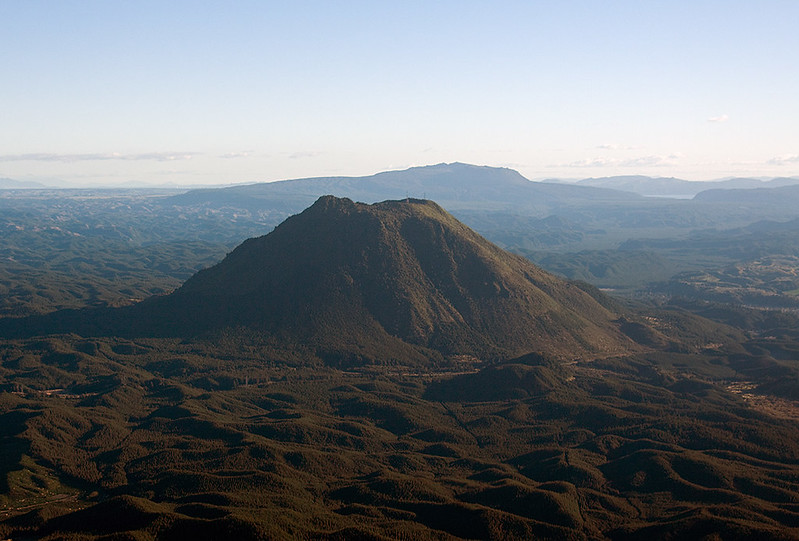
“With that information we are able to celebrate the child’s unique stance within our community,” says Elliott. “We are able to find a whakapapa strand that links our community to that child, so that they have a true sense of belonging.”
Some whānau arrive at the kindergarten with limited knowledge of their whakapapa and care has to be taken to be respectful.
“It’s an honour when parents share with you the information about their ancestors, but it’s also a privilege supporting parents to find more information, not only for the child but for themselves. It’s not our role to tell parents their whakapapa, but we can team up with them to do the research and when they start making the connections their faces light up.”
The knowledge of whakapapa helps shape horopaki or observations that kaiako make of tamariki.
“The observation is about the now, but it is within a wider, historical context. So it may relate back to a tipuna, a place, or a wharenui or marae.”
The focus on whakapapa does not exclude non-Māori children. Their backgrounds are also celebrated along with their cultures. Kaiako have made an effort to learn some of the language of Chinese and Indian whānau.
“It’s not our role to tell parents their whakapapa, but we can team up with them to do the research and when they start making the connections their faces light up.”
“We’ve worked really hard as a team to build our capacity in the language and culture of these families and thought hard about how to provide a space where all children can have a sense of belonging,” says Elliott.
Haka and waiata are important ways of connecting tamariki to the past as well as place.
“Haka is everywhere. If you are a descendent of Māori you cannot avoid it. When we do haka or mōteatea, the traditional chants, we transport our tamariki into a different time. The waiata we share are related to this area, so again we are strengthening their understanding and connections to this place.”
The tamariki have opportunities to share what they have learned when visitors come to the kindergarten.
“During the pōwhiri our tamariki perform the haka pōwhiri, they’re involved in the whaikōrero processes, the karanga process and the making of the hākari. Exposing them to those things consistently will make them second nature when they grow up.”
Ko Whanaupaki te mauka
Ko Kaikorai te awa
Ko Brockville Kindergarten
Te kohukahuka
Up on the Western snowline above Dunedin, looking out toward the harbour, is Brockville Kindergarten. It is at the heart of a housing corporation area with a diverse population including many former refugees.
“Somewhere between a quarter and a third of our tamariki are Syrian,” explains Head Teacher Adele Ellwood. “We also have children who are Columbian, Burmese and Malay, alongside our Tongan and Māori and Pākehā children.”
Brockville Kindergarten has built an environment where all tamariki feel a sense of belonging and are culturally affirmed. At the same time there is a strong commitment to biculturalism.
“At Brockville we respect te ao Māori and we believe that every child in Aotearoa New Zealand has the right to know about the Māori world,” says Ellwood.
No matter what corner of the world they are from, tamariki are immersed in traditional Māori stories and use Māori words in their everyday conversation, often with the local Kai Tahu pronunciation. The kindergarten pepeha acknowledges the maunga Whanaupaki and Kaikorai awa, while tamariki and kaiako operate under Brockville kawa.
“We used to call it a tiriti,” explains Ellwood. “It incorporates the values by which we operate and how we are expected to relate to each other and to the environment.”
The kindergarten is driven by the values of whakawhanaungatanga, manaakitanga and kaitiakitanga.
“We believe that every child in Aotearoa New Zealand has the right to know about the Māori world.”
“The children talk about Papatūānuku all the time and about the need to look after her. They’re enthusiastic about rubbish sorting, recycling and composting and you really see our tuakana/teina philosophy in operation in those activities and in feeding the worm farm. The older children teach the younger ones.”
Gardening is a big feature of Brockville, both within the kindergarten and at the neighbouring community garden where they partner with the school and kōhanga reo.
“Many of our children come from families who are unfamiliar with gardening, so we are kind of educating the parents as well. Our Syrian children know about gardening. They are enthusiastic and love the mahi with the tools and the wheelbarrows; the planting, weeding and harvesting.”
Ellwood is delighted that the former refugee children feel they belong at their kindergarten. Before 2015 most Syrian children attended the Arabic speaking pre-school in town, but the massacre in Christchurch caused such fear in the community that many parents opted to keep their children closer to home.
“We have worked hard to welcome them; to make them feel they are whānau. We’ve recently employed an Arabic speaking staff member and that has helped build better communication with parents and children.”
Ellwood shares a small story to illustrate the progress she believes the kindergarten has made.
“One of our Syrian mothers always seemed a little distant and abrupt when she dropped off or picked up her child. Perhaps it was because her English was quite limited, but one day she came up to me and said in a heartfelt way: “The people of Syria love this kindergarten.”
In Te Whāriki, the mana whenua strand is pre-eminent where history is concerned. That strand makes specific reference to developing a sense of identity and belonging.
Each of the centres in this story embraces history as a living thing, where tamariki are affirmed and see themselves in relation to people, places and things.
Teaching histories involves connecting with the Gods (atua), the environment (taiao), the people (tangata) and the land (whenua), through whakapapa and whanaungatanga. It is about viewing the world through the lens of biculturalism.
The art of walking upright here
is the art of using both feet.
One is for holding on.
One is for letting go2.
References
[1] Excerpt from “The Skeleton of the Great Moa in the Canterbury Museum” by Allen Curnow (1943)
[2] Excerpt from “The trick of standing upright here” by Glenn Colquhoun (1999)
